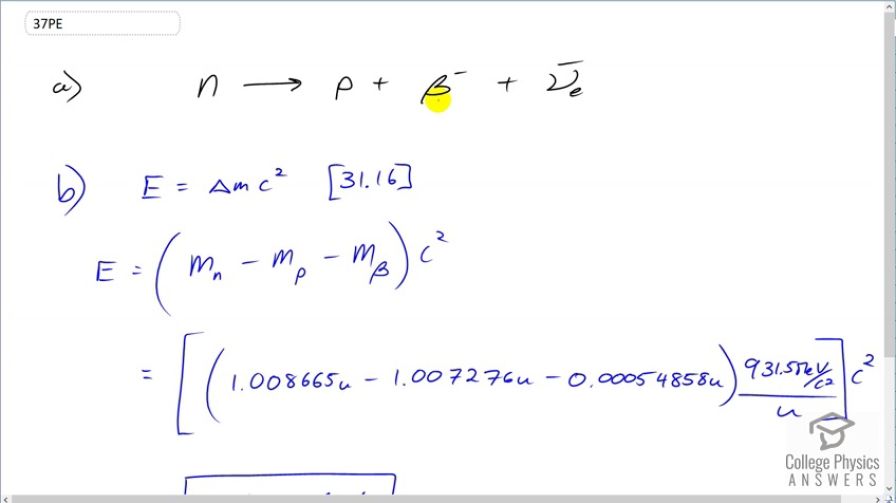Question
(a) Write the complete decay equation for the neutron. (b) Find the energy released in the decay.
Final Answer
- Please see the solution video
Solution video
OpenStax College Physics, Chapter 31, Problem 37 (Problems & Exercises)

vote with a rating of
votes with an average rating of
.
Calculator Screenshots
Video Transcript
This is College Physics Answers with Shaun Dychko. Here is the β-decay equation for a neutron; it turns into a proton plus an electron and so charge is conserved because there's a total charge of zero between this plus 1 on the proton and negative 1 from this β-particle which is really an electron. And then electron family number is also conserved because there's a compensating electron anti-neutrino that has an electron family number of plus 1 to compensate for the appearance of this electron which has an electron family number of negative 1 and so that the total is 0 as we started with. OK. And yeah. Now for part (b), we are asked to figure out what is the energy released in this β-decay of a neutron? So we have the energy is the change in mass times c squared and so that is the mass of the neutron that we started with minus the total mass of the products and we can ignore the mass of the neutrino because it's so light. So we have mass of the neutron minus mass of the proton minus mass of the β-particle which is an electron and then we times that by c squared. So we look up the masses in atomic mass units and then multiply by 931.5 megaelectron volts per c squared for every atomic mass unit and then we multiply that by c squared and we end up with 0.783 megaelectron volts. So this number here is the mass of a neutron; this number here is the mass of the proton and this mass here is the mass of an electron.

